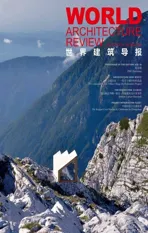Shenzhen Energy Headquarters
2019-05-07
地点:中国深圳
竣工日期:2018年
建筑类型:商业
面积:96 000 平方米
高度:250 米
建设单位:深圳能源公司
设计单位:BIG
合伙主管:Bjarke Ingels, Andreas Klok Pedersen
项目经理:Martin Voelkle
项目负责人:Song He, Andre Schmidt
合作者:奥雅纳,Transsolar,Front
获奖:HKIE结构卓越奖,2018年
Location: Shenzhen, China
Date: 2018
Program: Commercial
Size: 96 000 m2
Highth: 250 m
Client: Shenzhen Energy Company
Design: BIG
Partners-in-Charge: Bjarke Ingels, Andreas Klok Pedersen
Project Manager: Martin Voelkle
Project Leaders: Song He, Andre Schmidt
Collaborators: ARUP, Transsolar, Front
Awards: HKIE Structural Excellence Award, 2018
在深圳的文化、政治和商业中心,深圳能源公司的96 v000平方米的写字楼开发项目,是为了在深圳的文化、政治和商业中心进行外观和感觉,同时在城市的主要轴线上作为一个新的社会和可持续地标。
深圳能源公司新总部的数量和高度是由中央地区的城市规划确定的。这一开发项目包括两座塔楼,向北延伸2.2米,向南延伸1.2米,在脚上连接着一个34米高的平台,包含着主要的大厅、会议中心、自助餐厅和展览空间。与邻近的塔楼一起,这一发展形成了一个连续的弧形天际线,标志着深圳的中心。
大开发了一个起伏的建筑信封,它在两座塔楼周围形成了波纹状的皮肤,并打破了传统的玻璃幕墙。通过折叠可以减少太阳负荷和眩光的部分,一个带有封闭和开放部件的立面在透明度和不透明度之间摇摆。封闭的部件提供高绝缘性,同时阻挡阳光直射并提供视图。其结果是,这些塔看起来是一个经典的形状,从远处有一个有机的图案,从特写中可以看到一个优雅的褶皱结构。
立面的弯曲方向与太阳方位相对应:它能最大程度地使朝北的开口自然光线和视野,同时尽量减少阳光照射下的暴露。这种可持续的外观系统减少了建筑物的整体能源消耗,没有任何移动部件或复杂的技术。
从街道的角度看,有一系列的墙被拉开,游客们可以从建筑物的北面和南面进入商业空间,而专业人士则从前面的广场进入充满阳光的大厅。一旦进入内部,建筑物的线性结构就会继续水平地继续下去:石花盆的像素景观在相同的维度上,与建筑信封的波纹相同。
深圳能源公司的办公室被放置在最高的楼层,员工可以欣赏到城市的风景,而剩下的楼层则是可出租的办公空间。在建筑物的突出区域内,立面图被拉长了——两个平滑的变形为每层楼、会议室、行政俱乐部和员工设施创造了巨大的空间。
折叠的墙壁可以通过一个方向的透明玻璃提供一个自由的视野,并通过反射室内面板之间的直接阳光,创造出一种有大量散射日光的条件。即使太阳直接来自东方或西方,太阳光线的主要部分由于窗户的平角而反射到玻璃上。
当太阳落下时,变化的透明度和弯曲的线条创造出一种几乎木结构的纹理,或者是一个垂直的梯形山丘的场景。在幕墙之间打开的缝隙,可以显示出会议室、行政办公室和小组讨论区等特殊空间,使这座建筑从城市的不同地方获得了独特的个性。



The 96,000m2office development for the state-owned Shenzhen Energy Company is designed to look and feel at home in the cultural, political and business center of Shenzhen, while standing out as a new social and sustainable landmark at the main axis of the city.
The volume and height of the new headquarters for Shenzhen Energy Company was predetermined by the urban masterplan for the central area. The development consists of two towers rising 220m to the north and 120m to the south, linked together at the feet by a 34m podium housing the main lobbies, a conference center, cafeteria and exhibition space. Together with the neighboring towers, the development forms a continuous curved skyline marking the center of Shenzhen.
BIG developed an undulating building envelope which creates a rippled skin around both towers and breaks away from the traditional glass curtain wall. By folding parts of the envelope that would reduce solar loads and glare, a façade with closed and open parts oscillate between transparency to one side and opacity to the other. The closed parts provide highinsulation while blocking direct sunlight and providing views out. As a result, the towers appear as a classical shape with an organic pattern from a distance and as an elegant pleated structure from close-up.
The sinuous direction of the façade corresponds to the solar orientation:it maximizes north-facing opening for natural light and views, while minimizing exposure on the sunny sides. This sustainable facade system reduces the overall energy consumption of the building without any moving parts or complicated technology.
From the street level, a series of walls are pulled open for visitors to enter the commercial spaces from the north and south end of the buildings,while professionals enter from the front plaza into the daylight-filled lobby.Once inside, the linearity of the building façade continues horizontally: the pixel landscape of the stone planter boxes is in the same dimensions and arranged in the same pattern as the ripples of the building envelope.
The offices for Shenzhen Energy Company are placed on the highest floors for employees to enjoy views to the city, while the remaining floors are rentable office space. Within the protruded areas of the building, the façade is stretched out—two smooth deformations create large spaces for extra good views on each floor, meeting rooms, executive clubs and staff facilities.
The folded wall provides a free view through clear glass in one direction and creates a condition with plenty of diffused daylight by reflecting the direct sun between the interior panels. Even when the sun comes directly from the east or west, the main part of the solar rays are reflected off of the glass due to the flat angle of the windows.
As the sun sets, the changing transparency and the curved lines of the façade create an almost wood-like texture or a scene of vertical terraced hills. The slits that open between the curtain wall to reveal special spaces such as boardrooms, executive offices and breakout areas, lend the building a distinct character from different parts of the city.


